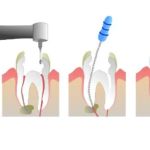How to Prevent Staining on Veneers
Veneers are a popular choice for those seeking to improve their smile, as they provide a natural, flawless look. However, like natural teeth, veneers can stain over time, affecting their appearance and longevity. Preventing staining on veneers requires understanding the factors that contribute to discoloration and taking proactive steps to maintain their pristine look. In this article, we will explore practical tips and strategies for preventing stains on veneers, ensuring your smile stays bright and beautiful for years to come.
- Understanding Veneers and Their Susceptibility to Stains
- Common Causes of Stains on Veneers
- Establishing an Effective Oral Care Routine
- Foods and Beverages to Avoid for Stain Prevention
- The Importance of Regular Dental Visits
- Additional Maintenance Tips for Long-Lasting Veneers
1. Understanding Veneers and Their Susceptibility to Stains
Veneers are thin, custom-made shells designed to cover the front surface of your teeth. They are typically made from porcelain or composite resin. Porcelain veneers, in particular, are highly resistant to staining because of their smooth, non-porous surface. However, composite resin veneers can be more porous and may stain more easily over time if not properly cared for.
While veneers themselves are stain-resistant, the materials they are bonded to, such as the natural tooth beneath, can still be affected by staining. It's essential to remember that good oral hygiene and maintenance will help protect both the veneers and your natural teeth from discoloration.
2. Common Causes of Stains on Veneers
There are several factors that contribute to staining on veneers, many of which are related to lifestyle habits and oral hygiene. Understanding these causes can help you take the necessary steps to prevent stains from occurring.
- Dietary Habits: Consuming foods and beverages that are highly pigmented, such as coffee, red wine, tea, and berries, can lead to staining over time. These substances can leave residue on both veneers and natural teeth.
- Smoking and Tobacco Use: Tobacco products, including cigarettes and cigars, contain chemicals that can stain not only natural teeth but also veneers. The tar and nicotine in tobacco can adhere to the surface of veneers, causing discoloration.
- Poor Oral Hygiene: Failing to brush and floss regularly can result in plaque buildup and staining on both veneers and natural teeth. Staining substances are more likely to adhere to surfaces that are not properly cleaned.
- Age: Over time, veneers may begin to lose their luster, and the materials may become more susceptible to staining. Additionally, the natural teeth beneath veneers may change in color due to aging, affecting the overall appearance of your smile.
3. Establishing an Effective Oral Care Routine
The foundation of preventing staining on veneers is maintaining a thorough oral care routine. Brushing and flossing regularly helps keep your teeth and veneers clean and free of plaque and debris that can cause discoloration.
Here are some key steps to include in your oral care routine:
- Brush Twice a Day: Use a soft-bristled toothbrush and non-abrasive fluoride toothpaste to gently clean your veneers and natural teeth. Avoid abrasive toothpastes that can scratch the surface of your veneers.
- Floss Daily: Flossing helps remove plaque and food particles that can contribute to staining. Ensure that you gently floss around the base of your veneers and natural teeth.
- Use a Mouthwash: Consider using an antimicrobial mouthwash to help reduce plaque buildup and freshen your breath. Avoid mouthwashes with high alcohol content, as they can dry out the mouth and affect oral health.
4. Foods and Beverages to Avoid for Stain Prevention
While it’s not necessary to avoid certain foods and drinks entirely, being mindful of your consumption can go a long way in preventing stains on your veneers. The following foods and beverages are known for their staining potential:
- Coffee and Tea: These drinks contain tannins, which can contribute to staining. If you must consume coffee or tea, consider drinking them through a straw to minimize contact with your veneers.
- Red Wine: Red wine is rich in antioxidants and tannins, making it a significant culprit for staining. If you’re a wine enthusiast, drinking in moderation and rinsing your mouth afterward can help mitigate staining.
- Dark Berries: While healthy, berries such as blueberries, blackberries, and cherries can stain your veneers. Eating them in moderation and brushing your teeth afterward can help prevent discoloration.
- Curries and Sauces: Foods with heavy colorings, such as curry or soy sauce, can stain veneers if they’re consumed frequently. Be cautious when consuming such dishes and rinse your mouth afterward.
5. The Importance of Regular Dental Visits
Regular dental visits are essential for maintaining both your veneers and overall oral health. A dental professional can clean your veneers more thoroughly than you can at home, ensuring that plaque buildup is removed. Additionally, your dentist can check for any signs of damage to your veneers, as well as monitor the health of your natural teeth.
During your visits, ask your dentist for advice on how to best maintain your veneers and prevent staining. Some patients may benefit from professional cleanings or even veneer polishing, which can help restore their original shine.
6. Additional Maintenance Tips for Long-Lasting Veneers
To ensure your veneers stay in great condition and stain-free, here are a few additional tips:
- Limit Chewing Hard Foods: While veneers are durable, they can chip or break if exposed to excessive force. Avoid chewing on hard foods like ice or pens, and be cautious with sticky foods that could pull on your veneers.
- Consider a Whitening Treatment: Over time, your veneers may begin to look less vibrant. If this happens, consult with your dentist about professional whitening treatments to maintain their appearance.
- Protect Your Veneers: If you grind your teeth at night, consider wearing a custom night guard to prevent unnecessary wear and tear on your veneers.
By following these simple tips, you can maintain your veneers’ bright and flawless appearance for years to come. For more information on how to care for your veneers, or if you're considering getting veneers, visit Dentistry Toothtruth.







 Hutchinson Metro Dental4.0 (2685 review)
Hutchinson Metro Dental4.0 (2685 review) Emerson Family Dental5.0 (273 review)
Emerson Family Dental5.0 (273 review) Mundelein Dental Center3.0 (8 review)
Mundelein Dental Center3.0 (8 review) Sunnyvale Pediatric Dentistry and Orthodontics4.0 (365 review)
Sunnyvale Pediatric Dentistry and Orthodontics4.0 (365 review) Great Smiles Dental Care4.0 (472 review)
Great Smiles Dental Care4.0 (472 review) Larchmont Family Dental5.0 (532 review)
Larchmont Family Dental5.0 (532 review) The Importance of Oral Health Education During Pregnancy for a Healthy Pregnancy
The Importance of Oral Health Education During Pregnancy for a Healthy Pregnancy Best Tips for Brushing Your Teeth Properly for Healthy Gums: Essential Techniques for Oral Health
Best Tips for Brushing Your Teeth Properly for Healthy Gums: Essential Techniques for Oral Health Why Skipping Dental Checkups Can Lead to Bigger Oral Health Problems
Why Skipping Dental Checkups Can Lead to Bigger Oral Health Problems Advantages of Porcelain Dental Restorations
Advantages of Porcelain Dental Restorations How Can Diabetes Cause Tooth and Gum Problems? Preventing and Managing Oral Health Issues
How Can Diabetes Cause Tooth and Gum Problems? Preventing and Managing Oral Health Issues Healthy Habits for Promoting Good Oral Health and Hygiene: Tips for a Healthy Smile
Healthy Habits for Promoting Good Oral Health and Hygiene: Tips for a Healthy Smile